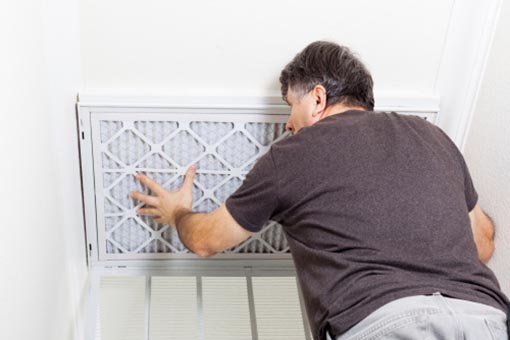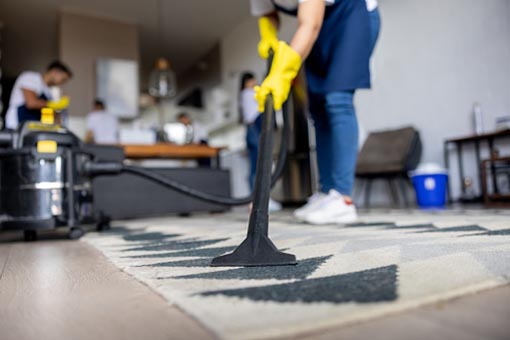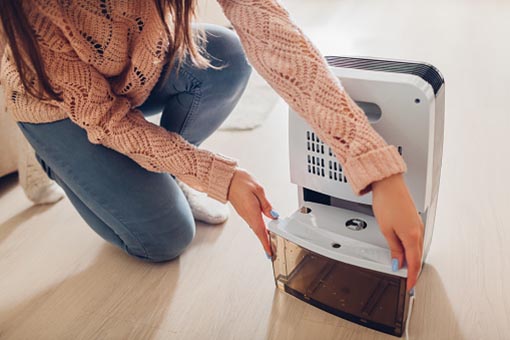HVAC Pro Reviews Top Indoor Air Quality Mistakes Homeowners Commit
Expert Reveals Indoor Air Quality Do’s and Don’ts
Depending on the season, homeowners often adjust their thermostat settings to stay comfortable. Because the weather is moderate during spring or fall, homeowners may choose to open their windows and depend on their HVAC system less. Meanwhile, summer and winter can often cause problems for indoor air quality (IAQ) since extreme temperatures require keeping the home closed off—to retain the air conditioning through summer and the heat in winter.
It’s easier to achieve good indoor air quality if you don’t make the same common mistakes that many homeowners make. Winnipeg Supply Service Experts Chief Operating Officer Cary Reed discussed these missteps and what you can do to avoid them.
Not Changing Air Filters Regularly Enough

Replacing your air filters minimizes the most common airborne contaminants circulating in your home. For anyone with allergies, failure to change air filters regularly could lead to sneezing, watery eyes or even require trips to the doctor. To make sure you are utilizing the best filter for your unique system and situation, become familiar with the Minimum Efficiency Reporting Value system, commonly referred to as MERV, Reed recommended.
“It’s based on a 1 to 20 scale, which means ratings in the middle of that range tend to be better home filters,” Reed said. “And, if you haven’t been consistent with filter replacement, I’d consider scheduling duct cleaning service too. Once that’s done, set up a system that reminds you when it’s time for air filter replacement”
Neglecting HVAC Maintenance
Skipping routine HVAC maintenance is another common misstep toward jeopardizing your indoor air quality, Reed added. An annual tune-up ensures it continues to deliver comfort smoothly and helps to avoid major repairs down the line. Along with checking drain lines and the refrigerant supply, tune-ups involve cleaning coils and heating elements where air passes through before moving through the rest of your home. When systems aren’t running properly, dust or moisture can build up and it may become the starting point for pollutants making it inside.
Buying Products that Contaminate the Air Unknowingly

Homeowners are often surprised to find out that many common products could be endangering their health and air quality. Here are a few ways homeowners might be worsening their indoor air quality without noticing. The first is by using aggressive cleaners that emit fumes and what are known as volatile organic compounds (VOCs). With so many alternatives available, select an eco-friendly cleaner instead, Reed suggested.
“Strongly scented candles are also a common air contaminant,” Reed said. “Despite having nice scents in the home, this is it isn’t the best idea for air quality. I even caution against many air fresheners.”
Another way people contaminate their home’s air quality inadvertently is with indoor plants that may trigger allergy symptoms. The Ogren Plant Allergy Scale (OPALS) is a basic 1 to 10 scale that is commonly employed to evaluate a plant’s potential for worsening symptoms for allergy sufferers.
“There are certain types that are considered great indoor plants such as ferns, ivy, fig and yuccas, but they also are known to lead to more allergy symptoms. It’s never a bad idea to check online before selecting indoor plants,” Reed said.
Overlooking Mold and Moisture Problems

High humidity in a home can promote mold and bacteria growth, which in turn can deteriorate indoor air quality. If you find a plumbing leak and water is starting to stain or damage the walls or another area of your home, fix it as early as possible, Reed said. Humidity is often how the growth of mold begins, especially if you reside in a warmer part of the country.
If there is a musty smell in the air, that’s a sign that moisture is trapped somewhere. Some homes also struggle with issues with either too much or too little moisture in the air, which usually means adjusting humidity levels with a whole-house humidifier or dehumidifier system, Reed added.
Not Opening the Windows When the Weather Is Mild
While it’s certainly more difficult to crack open the windows during a cold snap, there are plenty of days throughout the year when opening windows to let in some fresh air is a fast way to refresh stagnant indoor air. Not only is it beneficial for in-home air quality as a whole, but it helps lower radon levels. This radioactive gas is naturally emitted from soil. In fact, installing a basic detector from a home improvement store is a prudent investment, since high radon exposure is linked to roughly 21,000 lung cancer deaths each year, according to the CDC.
To keep the air refreshed even when it’s cold outside, use those midday temperature highs to crack the windows in rooms and other spaces. In the summer, use the early morning hours when it’s cooler to refresh your home, Reed suggested.
Not Taking Advantage of Technology and Services that Can Help
Regardless of whether your home has “problem air” because of excessive humidity levels, mold, bacteria and other airborne particles, there are many solutions available, outlined the HVAC pro.
Homeowners struggling with microorganisms often use germicidal UV light lamps, which are installed inside an HVAC system to sterilize bacteria, viruses and other microbes instantly. There are also ventilation systems that replace musty air for fresh air, or whole-home air purifiers that can provide a constant flow of fresh, clean air indoors.
“Your local indoor air quality specialists can also conduct testing to help you fully grasp the depth of the problem,” Reed said. “Just as you should keep up with HVAC system maintenance, ignoring these problems only makes them worse in the future. Thankfully, there are many ways to tackle air quality concerns.”
For details on how to enhance your home’s indoor air quality, visit ServiceExperts.com/indoor-air-quality or schedule your HVAC maintenance today.

